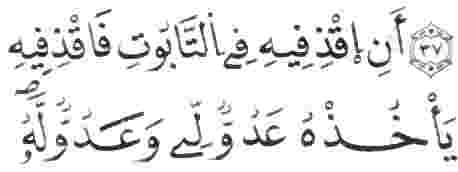Date: Mon, 15 Aug 2011 19:47:00 +0200
> At this point, regarding the dammas in question, it is a matter
> ... of providing appropriate documentation of equivalence
> (or non-equivalence) in use and explaining when one might want
> to use one variant or another in text.
> --Ken
n3882> This character should be considered a variant of U+0657
n3882> ARABIC INVERTED DAMMA. However, it is not considered to be a
n3882> relative of the damma. In his 2001a proposal Kew says U+0657
n3882> is “Used to indicate a long /u:/ vowel, or /u/ contrasted with
n3882> /o/”. The DPLN character is used to represent an ó.
I do not know what is meant by "not ... a relative of ... damma".
As the Urdu name "ulta pesh" indicates it is an "inverted damma", and
as Kew says it is a long version of damma /u:/ vs. of /u/. As
Arabian Arabic script lacks /o/ and /e/, /u/ can stand in for the
former, and /a/ and /i/ for the latter.
n3882> This character is not in Unicode and should be encoded. In
n3882> Wolof it is called “damma below who is reversing the way he is
n3882> going.”
n3882> The glyph in all the examples is an arrowhead (or halfcircle)
Please take note of the fact that the indigenous community calls
it a damma.
Please take not of the fact that its shape can be an "arrowhead"
or an angle or a 60%circle -- exactly as the Western Arabic damma!
(Arabic here for the language,
not for the script only)
n3882> This character should be encoded. It could be considered a
n3882> variant of U+065D ◌ٝ ARABIC REVERSED DAMMA. From Kew’s
n3882> proposal (N2723) it seems clear that he considered this a glyph
n3882> variant of U+065D ◌ ٝ ARABIC REVERSED DAMMA (see figures
n3882> 19&20 in N2723 or in this document as figures 12&13).
n3882> However, given that the arrowhead shape is a clear preference
n3882> (in DPLN #45 the damma shape was retained), we believe this
n3882> character should be encoded. Unifying dammas and arrowheads
n3882> would create great confusion with font developers.
Sorry, it is the other way way round.
damma has many shapes, actually a shape continuum, from
a small waw to a waw without the loop (60%circle) to
a angel either with one side horizontal or not.
When you look at the images in n3882 of West African text
and at the images I provided from Arab printed editions
of the qur'an from Libya to Nigeria: there is no difference.
There is no problem for font developers -- if they are
not confused for some other reason.
There are about ten traditional styles of Arabic script.
The German Wikipedia lists:
1 Kufi 2 Maghribi
3 Naschi 4 Muhaqqaq
5 Raihani 6 Thuluth
7 Tauqi 8 Riqa
9 Taliq 10 Nastaliq
11 Schekaste
12 Diwani 13 Ruqa
A font designer has to know that all Eastern styles
(nos 4 to 13) have the normal damma.
Maghribi has the Western form.
Kufi falls itself into many different forms, all
Eastern Kufi subforms taking the normal/Eastern damma,
and all Western subform of Kufi the Western form of damma.
The "problem" arises only with Naskhi, which is
originally a Eastern style, but is nowadays used
in the West as well. I attach an image from an
edition of the quran written in Lybia and available
in Jemen showing a variant of Naskhi but clearly
with Western damma and dammatan.
For almost all fonts there is no choice (and no
confusion possible). As to Nashki fonts, they
give them a flavor that suits the purpose. The
shape of the damma follows almost automatically.
Allow me to quote from "On the derivation of YOGH and EZH"
by Michael Everson:
I have seen texts with the glyph ... with a form resembling
..., but this has clearly been due to insufficent computer utilities.
Leaving ad hoc mistakes and fonts made by missionaries
two weeks after they came to the country aside, there
is not "problem" and no "ground for confusion" at all.
By adopting the proposal as it stand,
you will create confusion.
